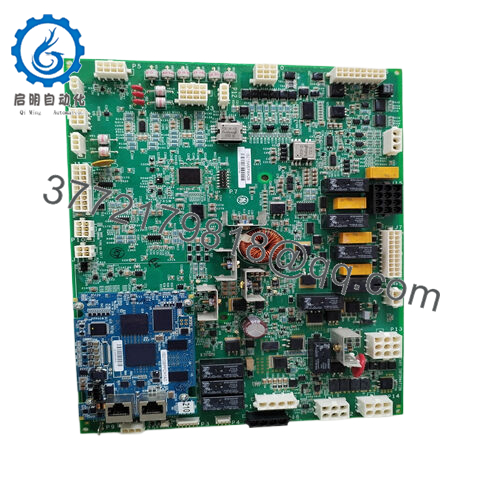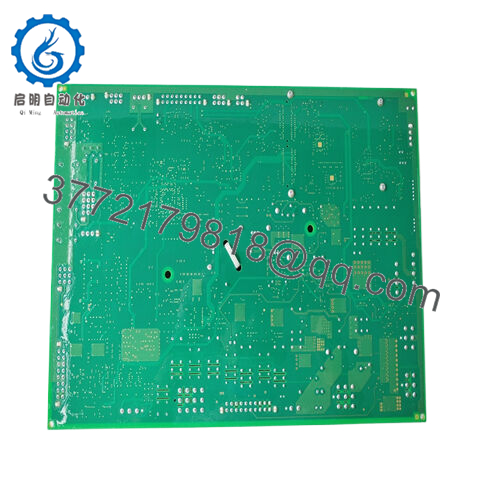Description
In the dynamic and unforgiving arena of wind energy generation, where precise blade pitch control is paramount to optimizing power output and preventing structural fatigue—imagine a multi-megawatt onshore turbine where erratic pitch commands during gusts lead to asymmetric loads and emergency shutdowns, or an offshore array where signal noise from EMI corrupts encoder feedback, risking yaw misalignment and reduced yield amid saline corrosion—these challenges demand unflinching I/O precision to sustain turbine integrity. Engineers in these environments often wrestle with fragmented control modules that falter under real-time demands from sensors and actuators, introducing latency, false triggers, or integration gaps that escalate downtime and maintenance in process control setups. The GE IS215WEPAH2B emerges as a specialized printed circuit board (PCB) from GE Vernova’s (formerly GE) Mark VIe series, tailored for wind energy pitch axis applications to interface diverse I/O signals with turbine controllers, ensuring high-reliability data exchange and modular fault tolerance in variable wind regimes.
This PCB becomes indispensable in wind farm expansions or retrofits, where scalable pitch control handles blade adjustments without full controller overhauls, or in hybrid renewable sites blending wind with solar for adaptive load following. In a coastal wind turbine, for instance, it processes incremental encoder inputs amid salt spray and vibration, isolating noise to deliver clean position signals that prevent overpitching and grid instability. For inland farms with dusty enclosures, the GE IS215WEPAH2B leverages its conformal coating for endurance, upholding system stability without nuisance faults from harmonics. It’s a go-to for modular integrations in multi-turbine SCADA, where its daughterboard assembly bridges legacy Mark VI to modern IONet, minimizing engineering disruptions in harsh, remote zones.
At its heart, it prioritizes your operational imperatives: with 8 analog inputs and 20 discrete inputs for versatile sensor fusion, it adapts to pitch hydraulics or electric actuators without reconfiguration. In gust-prone or EMI-saturated sites, its galvanic isolation fortifies paths, while relay outputs preempt cascading issues. For teams modernizing GE wind fleets, the GE IS215WEPAH2B bridges gaps, reusing VME rack footprints to defer capex, repositioning I/O boards from vulnerability points to resilient interfaces in industrial automation where pitch precision powers every rotor revolution.
Integrating the GE IS215WEPAH2B into your wind turbine architecture casts it as the pitch axis interface within GE’s Mark VIe ecosystem, where it conditions signals from encoders, sensors, and actuators via its modular assembly (AEPAH1B base with BPPB daughterboard), routing them to controllers like VPRO for closed-loop pitch adjustment in turbine nacelles. This PCB mounts in VME racks (13- or 21-slot), perching at the field I/O layer—directly interfacing incremental encoders and analog pots but relaying processed data upward through RS-485 or Ethernet (10BaseT/AUI) to SCADA for oversight. In a networked stack, it pairs with upstream processors for TMR voting or downstream relays for hydraulic drives, distributing I/O loads to avert single-point saturation.
In motion, it samples at 10-40 ms frame rates, multiplexing 8 analog and 20 discrete inputs with 2 PWM outputs for actuator control, while 9 relay outputs handle trips under 50 ms. Diagnostics channel via LEDs and COM ports (COM1/COM2, 9-pin D-sub), surfacing encoder health or fault codes in ToolboxST for remote polling—pivotal in process control where nacelle access lags. Without native power regulation, it draws from rack supplies (125 VDC), but its conformal coating enables IP54-like resilience in humid vaults, while firmware supports online reconfiguration without de-energizing.
This embeddability extends to hybrid wind setups: secure it in sealed enclosures with shielded cabling, configure via RS-485 for custom gains, and validate loops with built-in simulators to confirm against jitter. For VME veterans, the GE IS215WEPAH2B simplifies pitch I/O, turning sensor clusters into adaptive nodes that scale with turbine ratings, enhancing industrial automation from raw feedback to refined feathering.

IS215WEPAH2B

IS215WEPAH2B
| Specification | Details |
|---|---|
| Model Number | IS215WEPAH2B |
| Brand | GE Vernova |
| Type | Pitch Axis PCB (Mark VIe Wind Energy) |
| Input Voltage | 125 VDC |
| Operating Temp Range | -40°C to 70°C |
| Mounting Style | VME Rack (1 Slot) |
| Dimensions | Approx. 13.3 x 10.2 x 2.5 cm |
| Weight | 0.4 kg |
| Interface/Bus | RS-485 (2x), Ethernet (10BaseT/AUI) |
| Compliance | CE, UL, RoHS |
| Supported Protocols | Modbus RTU (via RS-485) |
| Typical Power Draw | 10 W |
Deploying the GE IS215WEPAH2B unlocks pitch harmony that withstands wind whims, its encoder interface—resolving positions to 0.1°—feathering blades in <100 ms to cap loads under 150% rated, preserving drivetrain life in gusts where desyncs compound into fatigue failures. This exactitude sustains energy capture by filtering harmonics to 1% THD, easing strain on converters and boosting AEP in variable regimes, all while its daughterboard modularity reuses VME slots without airflow hits.
The value amplifies in maintenance realms: event buffers (up to 100 transients at 16 kHz) arm root-cause hunts with waveforms that slash investigation hours from days to minutes, while conformal coating wards against 70°C ambients or 95% humidity, upholding calibration over cycles for deferred verifications in compliant ops. Integration eases too, as RS-485 foundations reuse turbine buses, cutting wiring for expansions like feathering banks.
Long-term, it curtails ecosystem drag with efficient 10 W draw that slims nacelle cooling, while 20 discrete inputs prune ancillary boards for sleeker racks that flex with sensor growth. In high-reliability pursuits, the GE IS215WEPAH2B minimizes total exposures, from PWM isolation that shields actuators to supervision that flags encoder wear early, crafting a pitch framework that thrives amid variability in wind energy control.
In onshore wind farms, the GE IS215WEPAH2B interfaces blade servos, multiplexing encoder signals amid dust swirls to secure critical system uptime in process control environments where pitch precision averts tower sway. Its high-reliability RS-485 processes I/O signals from pots, ensuring feathering fidelity.
Offshore arrays harness it for hydraulic pitch amid wave jolts, overseeing discrete inputs for continuous yaw—delivering relay schemes that uphold signal purity in saline bays. In hybrid wind-solar hybrids, it monitors actuator feedback against flux in inverter vaults, supporting modular output expansions. These roles highlight the GE IS215WEPAH2B as a pitch pioneer in harsh, rotor-rigid industrial automation, where I/O ingenuity meets endurance.
IS215WEPAH1A – Predecessor base model for Mark VI without daughterboard enhancements.
IS215WEPAH2C – Updated variant with extended RS-485 for denser turbine networks.
IS200AEPAH1B – Analog expansion companion for additional pitch inputs.
IS215BPPB – Daughterboard add-on for BPPB-specific I/O filtering.
VPRO-I1 – Processor core mate for Mark VIe pitch logic.
Mark VIe Pitch Kit – Cable and jumper toolset for nacelle installs.
IS215WEPAH2A – Legacy non-coated version for indoor turbine bays.
IS420WEPAH1A – Mark VIe equivalent for aero-derivative wind hybrids.
Before nacelle-mounting the GE IS215WEPAH2B, align VME slot pins—13/21-slot racks demand flush contacts to shun ghosts, so probe continuity if extending serially. Vet 125 VDC feeds for <5% ripple, as surges skew ADCs; decouple with ferrites if converters nearby buzz. Configure daughterboard jumpers per diagram before power-up, dodging init faults.
In the field, care boils to measured pulses that fit turbine sweeps. Monthly, scan LEDs for I/O status—steady greens affirm sync, but ambers cue a RS-485 dump to trace encoder drifts. Semiannually, reseat connectors for oxidation and cycle self-tests to benchmark sampling under load. For offshore arms, quarterly salt wipe of edges wards corrosion, paired with annual end-to-end sims validating PWM duty below 1% error. Per GE’s Mark VIe guide, this regimen keeps the GE IS215WEPAH2B as a low-drama ally, sustaining pitch poise with sparing lifts in your rotor rhythm.

 WhatsApp: +86 16626708626
WhatsApp: +86 16626708626 Email:
Email:  Phone: +86 16626708626
Phone: +86 16626708626


